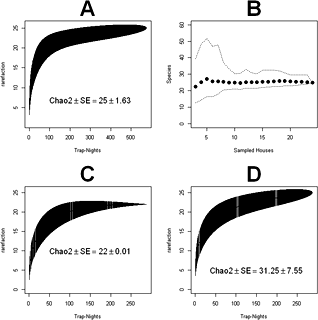
The phlebotomine sandfly fauna of traditional (shaded) and intensified (unshaded) coffee plantations in Colombia was sampled by a few methods as well as the species composition and density beneath the two systems compared. Twenty kinds of Lutzomyia sandflies (Diptera: Psychodidae: Phlebotominae) were collected, which eight come up with only inside the ‘Coffee Axis’ (‘Eje Cafetero’) in the departments of Caldas, Risaralda and Quindio, six were limited to the department of Norte de Santander and 6 happened in regions. Four species were collected only in traditional plantations and a pair of exclusively in intensified ones. No less than 13 species happened in plantation types. 15 species are opportunistic man-biters and eight are suspected vectors of leishmaniasis introduced on by Le. braziliensis, Le. panamensis or Le. mexicana. Seven species were collected inside houses and may participate in intradomiciliary transmission of Leishmania. The dominant species in Norte de Santander was Lu. spinicrassa, which composed 93.8% of all the sandflies collected in this particular department. This species was absent within the Eje Cafetero and various others among the 15 recorded there might be responsible for Leishmania transmission in this region, including Lu. trapidoi, Lu. yuilli, Lu. gomezi, L. hartmanni and Lu. ovallesi. Sandfly population densities were significantly greater in traditional plantations when compared with intensified ones. Residents of traditional plantations could describe sandflies in significantly more detail than individuals of intensified plantations, based on seven fundamental characteristics connected using the look and biting conduct in the insects.
 Resourse: https://ncbi.nlm.nih.gov/pubmed/
Resourse: https://ncbi.nlm.nih.gov/pubmed/